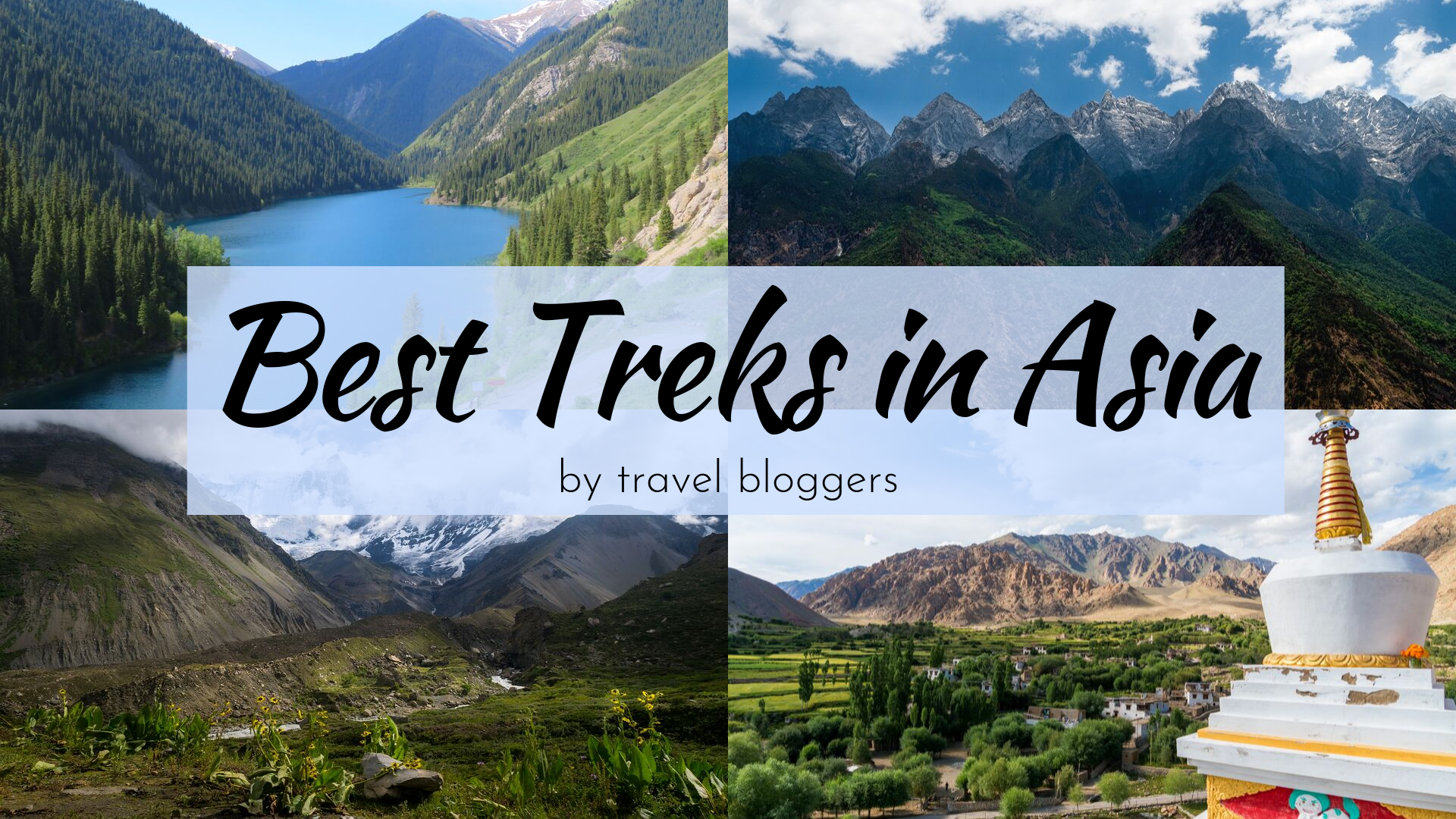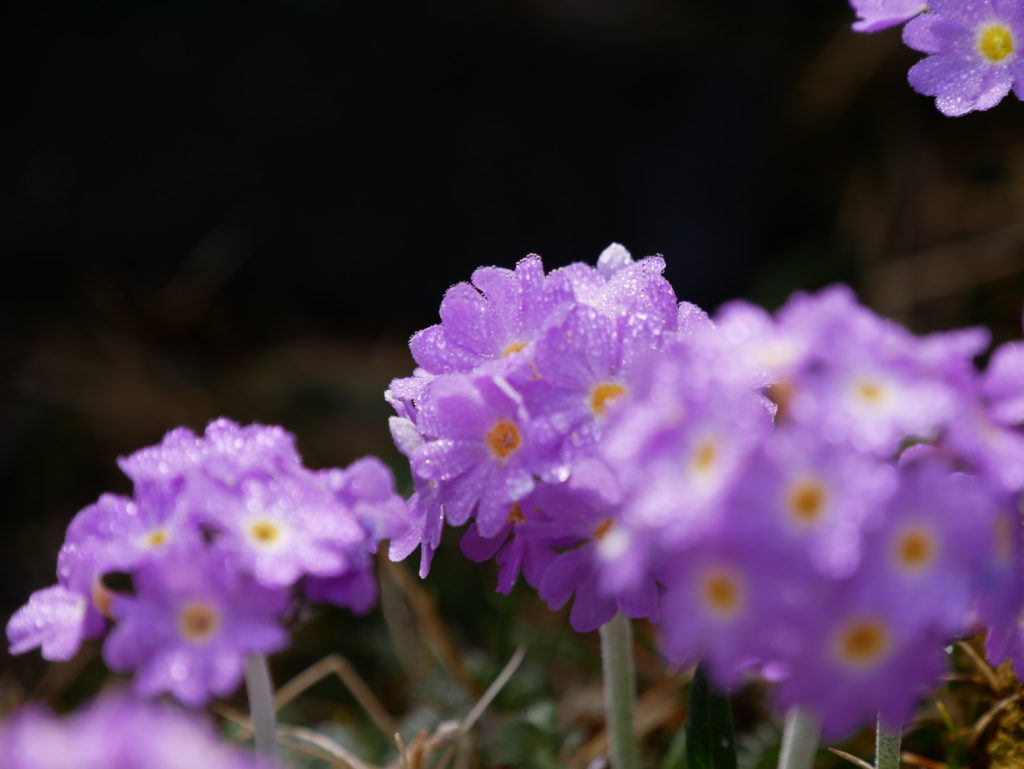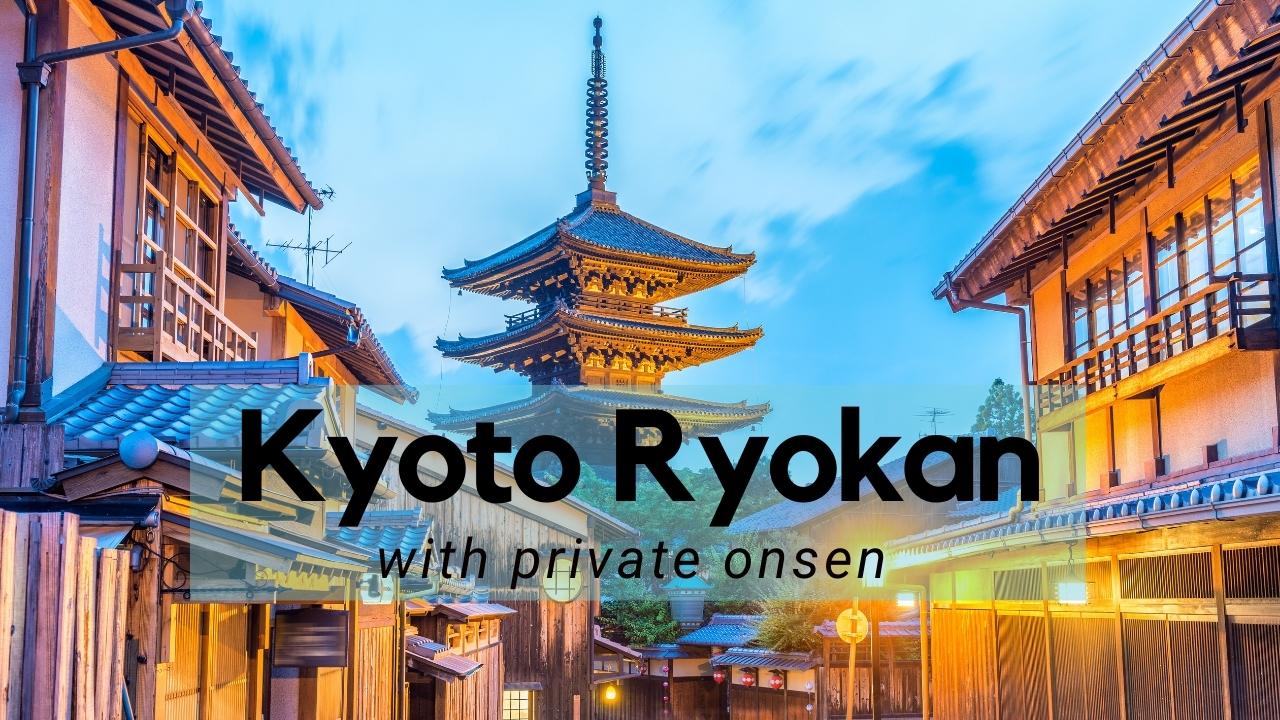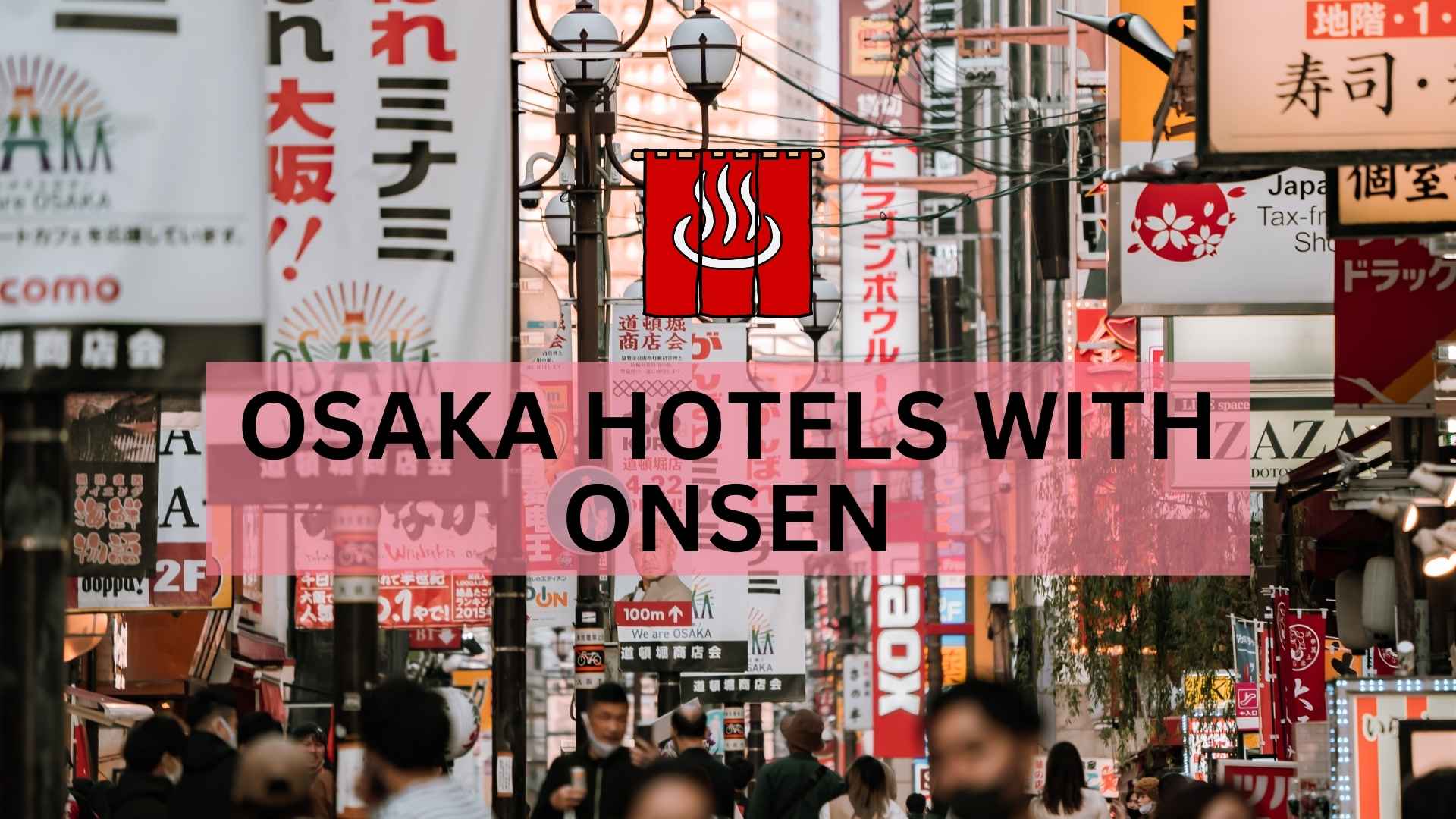There is no better way to explore the culture and beauty of a country than to embark on a trek through its most scenic and remote regions. When visiting such a diverse continent like Asia, its amazing how many different landscapes you can treat yourself to an adventure in. The best treks in Asia take you to mountains, jungles, volcanoes, and more, often while surrounded by lovely locals and extraordinary cultures.
Here are the Best Treks in Asia, spanning from India to China to Indonesia and everywhere in between, by travel bloggers.
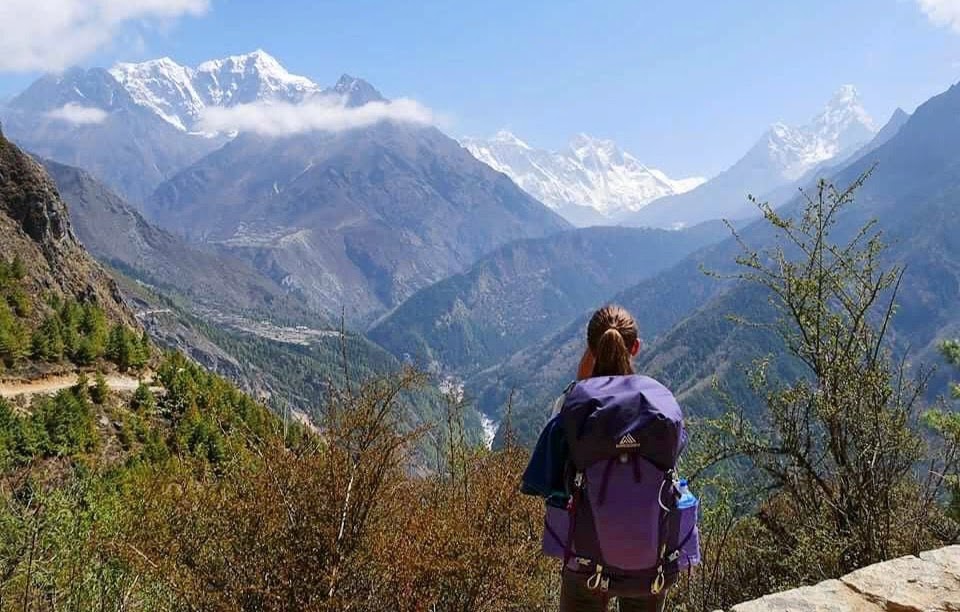
Best Treks in Asia Table of Contents
Best Treks in South Asia
Nepal
It’s no surprise that some of the best treks in Asia, and the best treks in the world are in Nepal. Home to the highest mountains, as well as beautiful culture and friendly locals, Nepal is the perfect country for avid trekkers. If you’re looking for a best trek in Asia to challenge yourself, gain some altitude, and maybe catch a glimpse of Mt. Everest herself, head to Nepal.
Read: Annapurna Circuit vs Everest Base Camp – Which Trek Should You Do?
Read: Trekking in Nepal Packing List
Three Passes Trek
By: Erika’s Travelventures (follow along on Facebook)
- Distance: 160 km
- Duration: 18-25 days
- Difficulty: Very Hard
- Permits: Required
- Guide: Recommended but not required
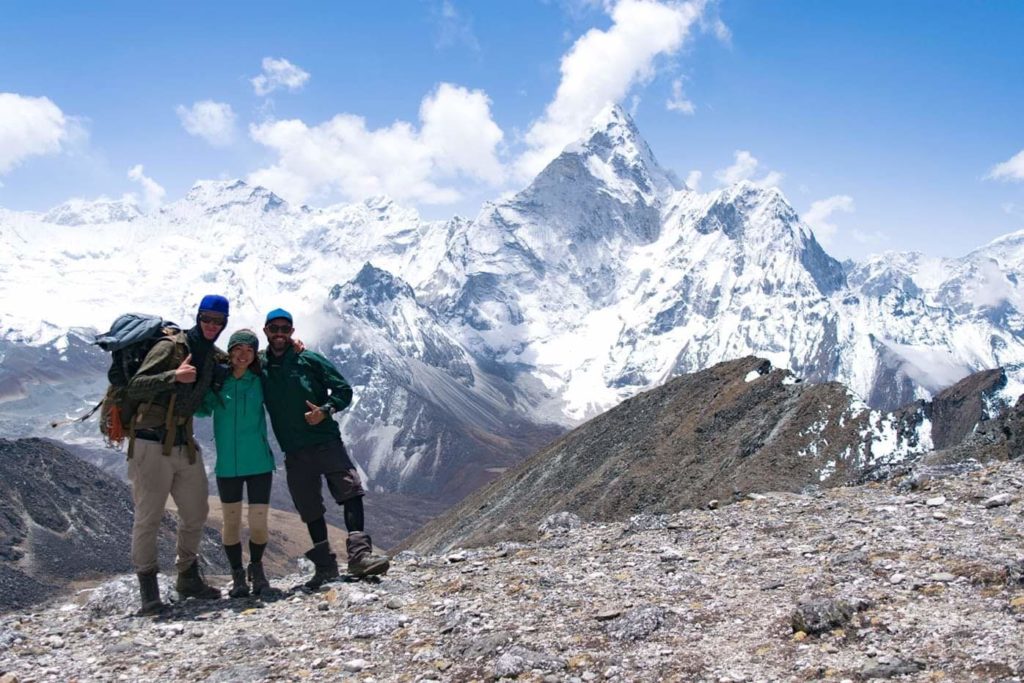
The Three Passes Trek is one of the biggest and baddest treks in Nepal that backpackers and amateur trekkers can do. Over 160+ kilometers, this trek lasts 18-25 days, and makes a circuit in the world-famous Everest region. Along the way, you’ll pass over three high mountain passes, Kongma La, Cho La, and Renjo La, visit Everest Base Camp and nearby Kala Patthar summit, and circle around to Gokyo and its glittering turquoise lakes.
Similar to most treks in Nepal, there are teahouses in villages that trekkers stay along the trail. They provide accommodation as well as food, water, showers, and sometimes wifi. Permits are required, but a guide is not, although many locals will recommend hiring one because of the dangers of the three passes.
On the three pass days, expect to spend 10-12 hours hiking from guesthouse to guesthouse. Each pass day covers hundreds of meters in elevation gain, incredible views and colorful prayer flags at the mountain pass, then a subsequent elevation loss. Be prepared for all types of weather by packing crampons, trekking poles, and warm winter clothing. All of the challenges faced during the Three Passes Trek ultimately makes it incredibly rewarding, and I highly recommend it for a trek in Nepal.
Check out the Three Passes Vlog here!
Annapurna Circuit
By: Swing Abroad (follow along on Pinterest)
- Distance: 209 km
- Duration: 13-15 days
- Difficulty: Hard
- Permits: Required
- Guide: Not Required
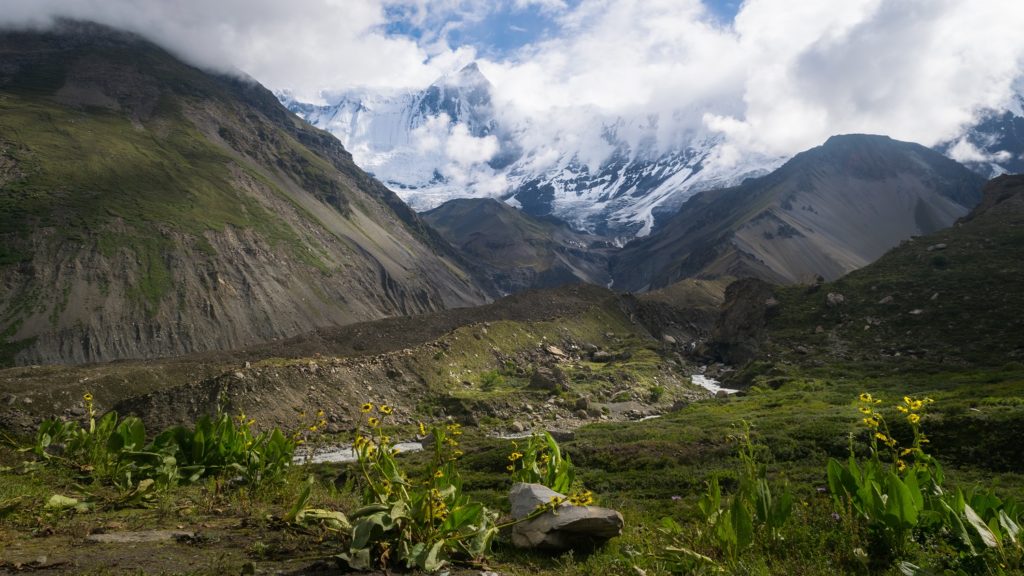
The Annapurna Circuit Trek is equally, if not more, magnificent than the Everest Base Camp Trek, which Nepal is most famous for. The Annapurna Circuit is located in the Annapurna Conservation Area, north of Pokhara. For this trek, you will need to apply for a permit by yourself or through trekking agent offices in Kathmandu or Pokhara. The process takes only a day, or an hour or two if you do it yourself.
Trekkers often leave most of their luggage in the hotels in Pokhara before heading to Besisahar, the starting point of the trek. Throughout the Annapurna Circuit, you will be staying in tea houses, so don’t worry about bringing tents. The food and accommodation prices will rise gradually as you proceed further from the lower elevation towns. Expect average daily expenses of around $20 per day for accommodation and food, not including permits, guides or porters, and transportation to and from the trek.
Two highlights of the Annapurna Circuit include a side trek to Lake Tilicho, the world’s highest altitude lake of its size, which will add another 3 days into your itinerary. Another highlight is reaching the tallest point of Annapurna Circuit trek: Thorong La Pass, at 5416 meters above sea level.
If you’re up for an adventure in Nepal, consider going for the Annapurna Circuit Trek In The Monsoon Season.
Check out the Annapurna Circuit Vlog here!
Everest Base Camp
By: A Social Nomad (follow along on Facebook)
- Distance: 110 km
- Duration: 14 days
- Difficulty: Hard
- Permits: Required
- Guide: Common but Not Required
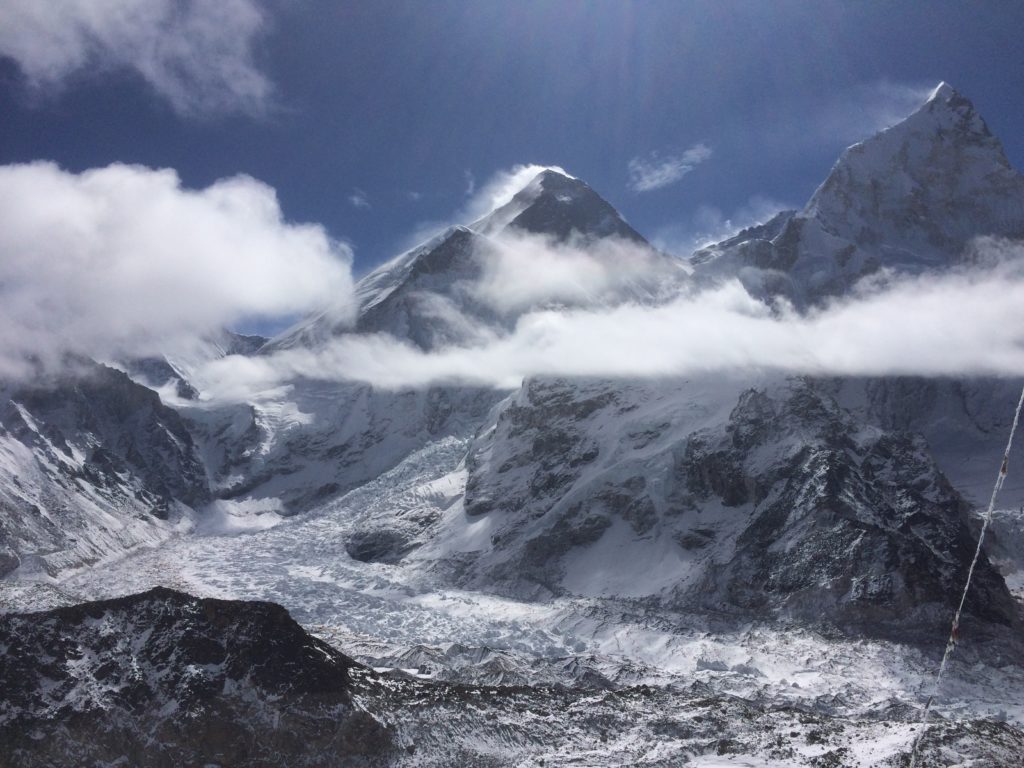
The Everest Base Camp Trek has stunning views around each bend, and is located in the Khumbu Valley. The region is home to many incredible monasteries, as well as schools and hospitals built by Sir Edmund Hillary (the first man to summit Everest). Be sure to summit Kala Patthar (5,550 m) where you can catch stunning views of Everest, the surrounding glaciers, and Everest Base Camp.
The 110 km, 14-day trek usually starts at the town Lukla. It’s located at 2,800 m above sea level and Lukla Airport is designated the world’s most dangerous airport. A permit is required to trek in this region, which is bought en route. A guide isn’t necessary, but we’d advise it if you’re not used to trekking at altitude. Good travel insurance is essential, because if you need to get to a lower altitude in a hurry, a helicopter out costs $5,000 US.
Average daily distances are around 12 km a day. You’ll cover more distance on the way back to Lukla, because you’re not only acclimatized, but you’re heading down. If you trek independently, food and accommodation are available in teahouses along the way. Budget anywhere from US$900 for a local guide, accommodation, flights and food up to US$2000 for an international company with sherpas, guides and local support.
Read 20 Things To Know Before Trekking To Everest Base Camp
Ghandruk
By: Explore With Lora (follow along on Instagram)
- Distance: 25 km
- Duration: 3 days
- Difficulty: Easy
- Permits: Required
- Guide: Not Required
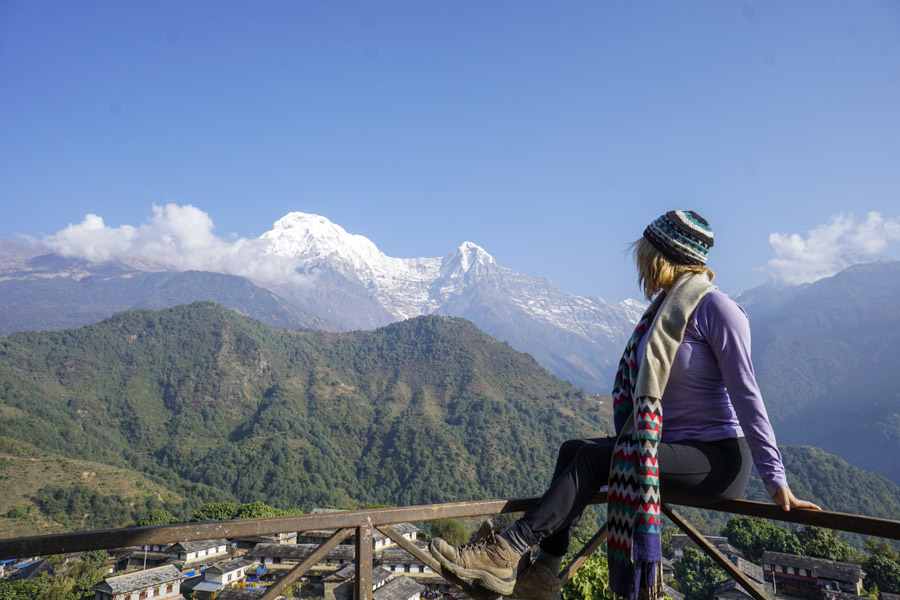
The Ghandruk Trek in Nepal is perfect for anyone looking for a short trek in Nepal, with no difficult ascends/descends. This trek is short but sweet, takes three days, and each day is only about five to six hours of walking. Unlike many treks in Nepal, you don’t have to worry about altitude sickness on this trail. The trek doesn’t go past 2000m in elevation in the foothills of the Himalayas.
Permits are required for the trek which can be arranged from any tour agency in Nepal, which can find along Pokhara lakeside. A guide is not required for the trail but recommended if you are not a seasoned trekker or not well versed with Nepali language and culture. All along the trail, you will find small villages with tea houses to stay in. You don’t need to worry about bringing food and water, as supplies can be bought at each village, and there are plenty of tea houses where you can order a hot meal.
A nice aspect of the Ghandruk trek is that you won’t see many other tourists on the trail. Instead, you will find lush green forests, friendly locals, and beautiful views. The highlight is Ghandruk village, where you can experience the unique Gurung culture and admire the surrounding landscapes.
Mardi Himal
By: Stingy Nomads (follow along on Facebook)
- Distance: 49 km
- Duration: 4-6 days
- Difficulty: Medium
- Permits: Required
- Guide: Not Required
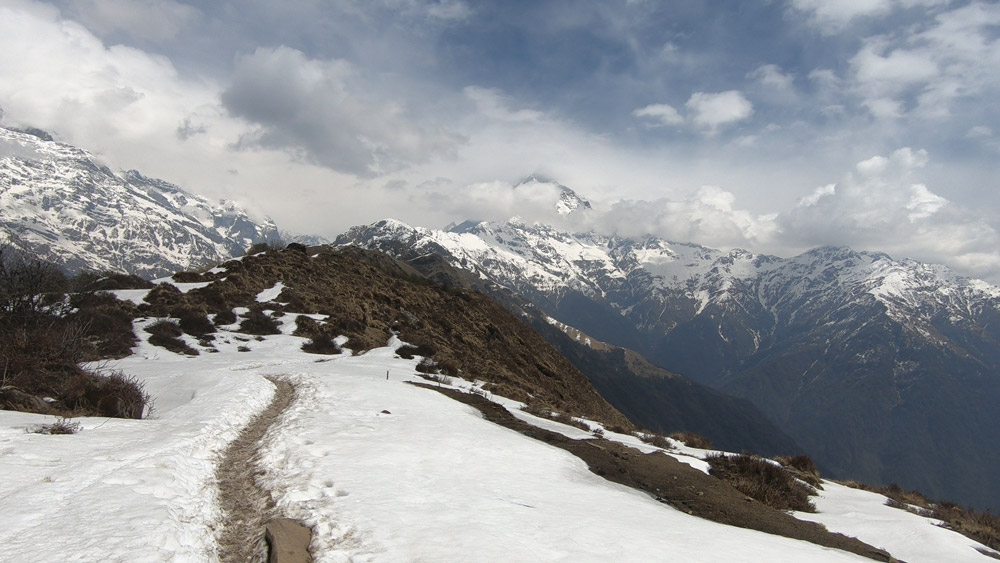
The Mardi Himal trek is a beautiful, lesser known Nepali trek providing spectacular panoramic views of the Annapurna range, and Machhapuchhre and Mardi Himal mountains. The Mardi Himal trek is a relatively short and can be comfortably completed in 4-6 days from Pokhara, with many trekking companies offering a 6-day or 7-day itinerary. Trekking independently is possible because the trail is well marked, and accommodation and food is easy to find at guest houses.
The most popular route to trek starts in Kande and finishes in Siding, with many busses leaving from Pokhara to Kande each day. The traditional trek is to the Mardi Himal base camp, but like most trekking routes in the Annapurna Sanctuary, there are several options for where to start and finish. Many trekkers combine the Poon Hill or Annapurna Base Camp trek with Mardi Himal, which all lie in the same Annapurna Sanctuary region.
Like for any other trek inside the Annapurna Sanctuary, to trek Mardi Himal you need the Annapurna Conservation Area permit (ACAP) and TIMS card. Try hiking in April and May, which are considered to be the peak hiking season in Nepal with the best weather conditions.
Langtang
By: A Rai of Light (follow along on Instagram)
- Distance: 40 km
- Duration: 7 days
- Difficulty: Medium
- Permits: Required
- Guide: Not Required
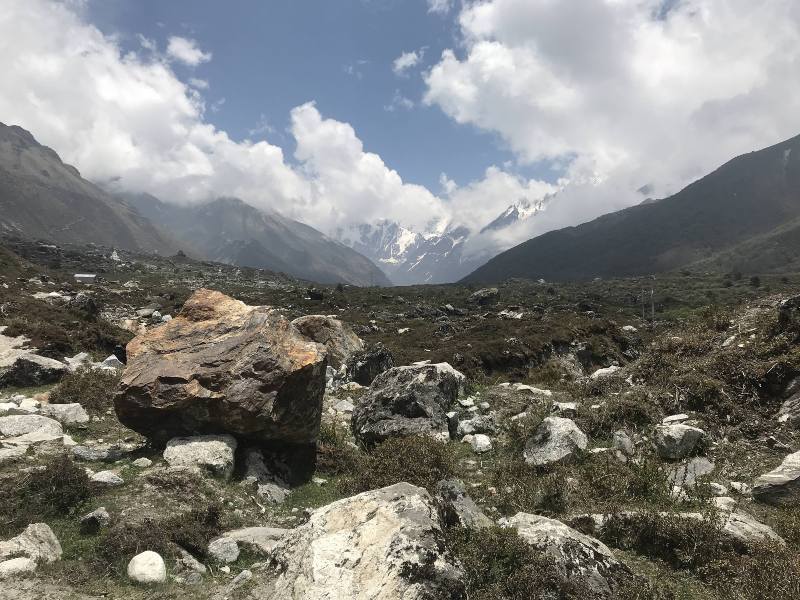
The Langtang trek is in a beautiful valley surrounded by the Himalayas, and is easily accessible from Kathmandu by road. Langtang is a region that was devastated by the 2015 earthquake in Nepal, and some of the remnants of abandoned structures can still be seen today.
The hike is over 40 kilometers and finishes at the peak of Kyanjin Ri at 4,773 m above sea level. This region is part of an old trade route to Tibet, and there are numerous opportunities to intermingle with the Tamang people of this region, creating an enjoyable cultural exchange between trekkers and locals.
A bonus of trekking in this region is the serenity it provides and getting to hike without the crowds. Access to the area requires a purchase of the Langtang National Park permit and the trek can be done with or without the use of a guide and porters. The trek can be described as moderately difficult, with accommodation in tea-houses along the way. The Langtang trek is one of the better options when looking for a short trek in Nepal and takes around one week to complete.
India
India is not all just amazing food, yoga retreats, and interesting religions. Much of the most impressive mountains in the world border north Indian states. If you want an alternative trekking experience to the Himalayas in Nepal, why not check out the beautiful mountainous landscapes of India?
Sham Valley Trek
By: Lost With Purpose (follow along on Instagram)
- Distance: 27 km
- Duration: 3 days
- Difficulty: Easy
- Permits: Not Required
- Guide: Not Required
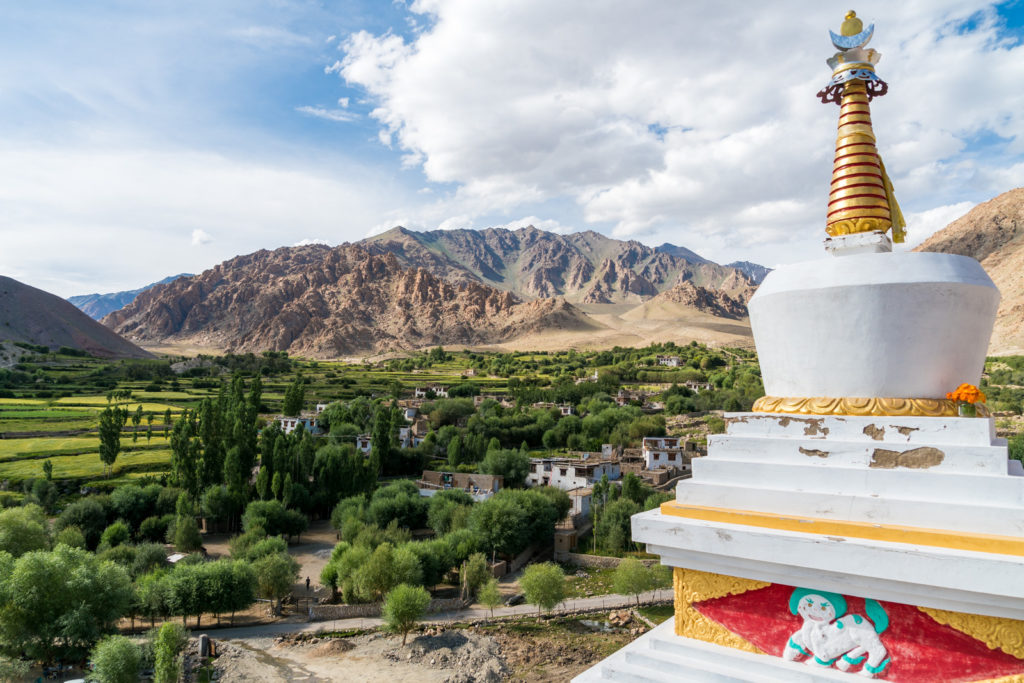
The Ladakh region of northern India is a trekker’s paradise. From strenuous multi-day treks to pleasant day hikes, the region offers something for everyone regardless of your fitness level. For an easier introduction to trekking in the Ladakh region, I recommend the Sham Valley “Baby” Trek.
The trek starts from Likir town, which can be reached by car or bus from Leh. Unless you make several detours, the distance to cover is around 27 km, and the highest point of the trek is 3,874 m above sea level.
The Sham Valley Trek is often referred to as the baby trek due to its relative ease. However, you’re still walking at high altitude, so don’t expect a casual walk in the park. The Sham Valley Trek is usually a 3-day, 2-night trek, although you can opt to add detours to make it a bit longer. It’s possible to do the trek as part of a guided tour, but it’s relatively easy to organize the trip yourself. You don’t need permits for the Sham Valley trek.
There are several villages along the trek, allowing you to go at your own pace and stop where you want. Each village has several homestays. Most homestays include breakfast, lunch and dinner, and charge about 1,000-1,500 rupees ($14-$21 USD) per night per person. It makes sense to bring snacks and water for the trek (make sure to properly dispose of your waste), but it’s possible to stock up on supplies in the villages. What more could you want in an intro trek in Asia?
Valley of Flowers
By: Eager 2 Travel (follow along on Instagram)
- Distance: 50 km
- Duration: 7-8 days
- Difficulty: Medium
- Permit: Required
- Guide: Not Required
The Valley of Flowers is a UNESCO World Heritage Site in northern India which is only open to trekkers from mid-June to mid-September. Govindghat Village is the starting point of the trek, which is difficult to reach in itself. Most people travel from Delhi to Rishikesh by bus, then take another bus or shared jeep to Joshimath. From there, it’s another shared jeep through isolated mountain roads to Gobindghat. Make sure to start early in the morning from Rishikesh so that you reach Govindghat by evening.
The Valley of Flowers trek takes up to seven or eight days, depending on the weather conditions. It’s best to keep a few buffer days in your schedule, because rain is common and it’s not to advised to trek in the rain. The trek reaches an altitude of 3,658m, considered to be ‘high altitude’, so it’s not the easiest of treks.
A permit is required, but it is optional to go on a guided tour or to hike by yourself, because the route is fairly well marked. Tour operators will charge you around $200 USD, but you can hike it within $100 if you go on your own. There are many budget rooms and tents along the trail.
The beginning of the trek starts with an uphill climb before the valley opens up, leading to the protected Valley of Flowers National Park. When you reach the valley, the view is stunning and you are surrounded by the flowers of a thousand species, including some very rare flowers. The valley is very beautiful and calm, and the perfect place to admire nature’s beauty.
Bhutan
An off-the-beaten-path country that is also home to incredible mountains is Bhutan. It’s a country known for being one of the happiest in the world, and even has negative carbon emissions. Talk about a sustainable adventure! Don’t let Bhutan’s neighbors, Nepal and India, steal the show when searching for your next best trek in Asia.
It is required to be part of a tour or have an approved guide with you in order to visit Bhutan. Discover Bhutan during a 4-day, 7-day, or even a 15-day tour here.
Tiger's Nest
By: Cultura Obscura (follow along on Facebook)
- Distance: 6 km
- Duration: 1 day
- Difficulty: Easy
- Permits: Required to enter Bhutan
- Guide: Required
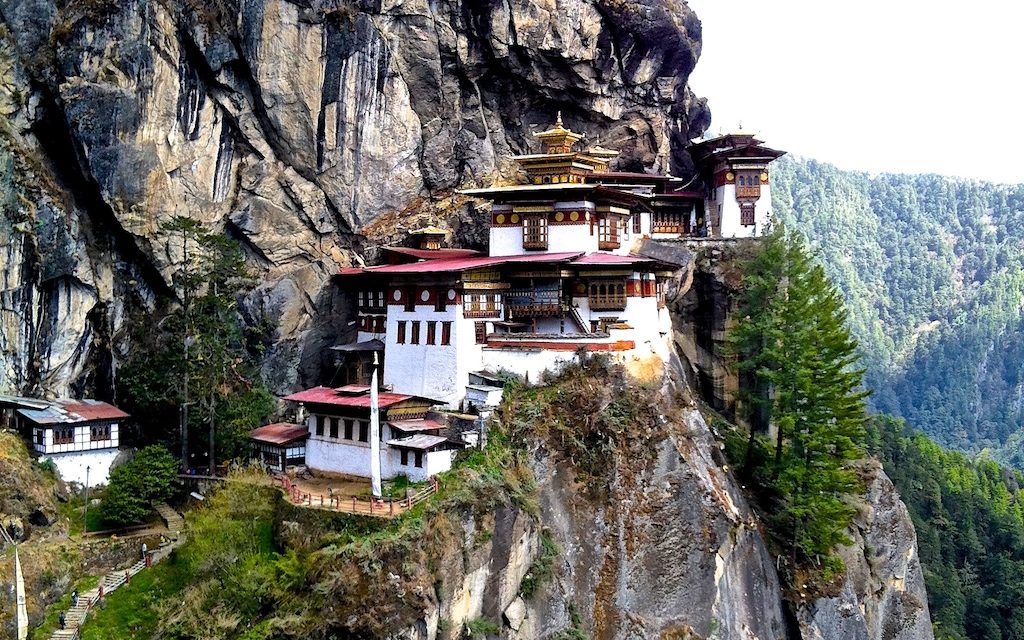
Best Treks in Central Asia
Kyrgyzstan
Kyrgyzstan, also known as the Kyrgyz Republic, lies in the heart of the “-Stans” and is known for its natural beauty. There are stunning mountain-scapes lined with rolling pastures as far as the eye can see. Because travelers from most countries can enter Kyrgyzstan visa-free, it’s a popular choice for starting a Central Asian adventure. Find your next best trek in Asia in Kyrgyzstan!
Alu Kul Lake Trek
By: Travels of a Bookpacker (follow along on Instagram)
- Distance: 45 km
- Duration: 3 days
- Difficulty: Medium
- Permits: Not Required
- Guide: Not Required
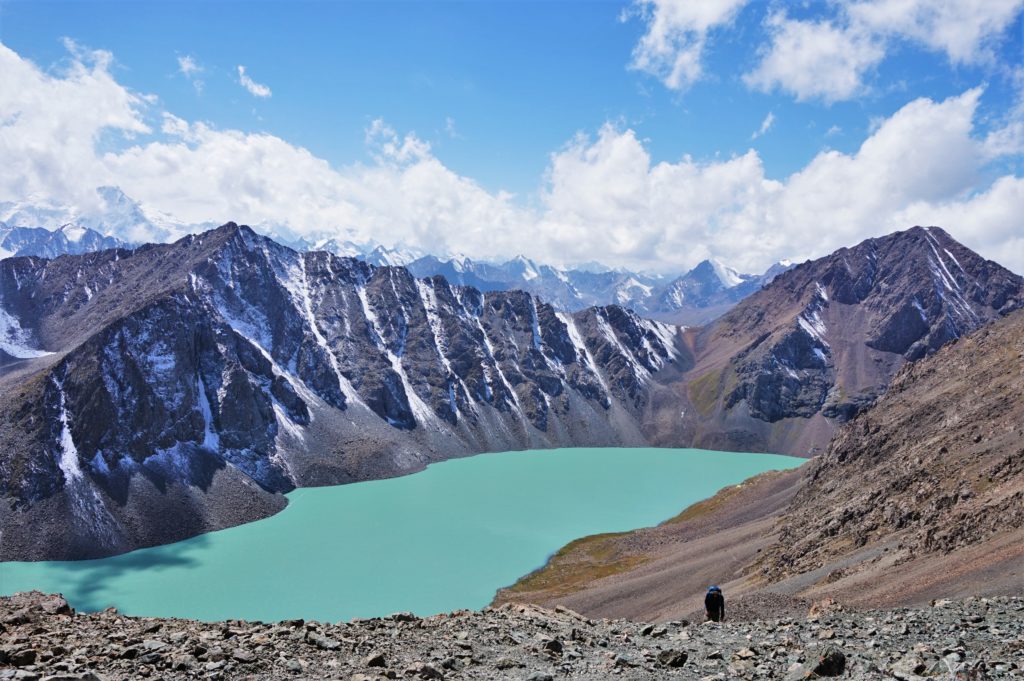
If you’re looking for a challenging, yet stunningly beautiful trek in Asia that isn’t packed with tourists, consider the mountains of Kyrgyzstan. Trailing through the mountains and valleys just outside of Karakol, the Alu Kul Lake Trek is unforgettable and offers unique experiences along the way. The trek totals 45km and involves a lot of steep climbing. The track is reasonably easy to follow, and if you are an experienced hiker, you won’t need a guide.
The trek is usually done over 3 days and 2 nights. You can either bring your own tent or stay at the yurt camps and villages along the way. There are several yurt camps that pop up over the summer months, and booking homestays in advance is becoming more popular too. Accommodation is a first-come, first-served basis if you haven’t booked through a tour agency.
If you’re on a budget you may want to carry your own food as its (understandably) expensive at the remote villages and camps. Remember to pack warm and waterproof clothes as the temperatures drop dramatically overnight. Altyn Arashan is the last stop on the trek, which is famous for its thermal springs: an excellent spot to relax after climbing to 3900m during the day!
Kazakhstan
Kazakhstan is a country with a variety of breathtaking views. It’s home to the low-lying, vast West Siberian Plains as well as massive alpine mountains in the south. Kazakstan’s tallest mountain reaches a whopping 7,010m! Go on an off-the-beaten path escape into nature in Kazakhstan.
Kolsai Lakes
By: Backpack Adventures (follow along on Instagram)
- Distance: 8 km
- Duration: 1 day
- Difficulty: Medium
- Permits: Not Required
- Guide: Not Required
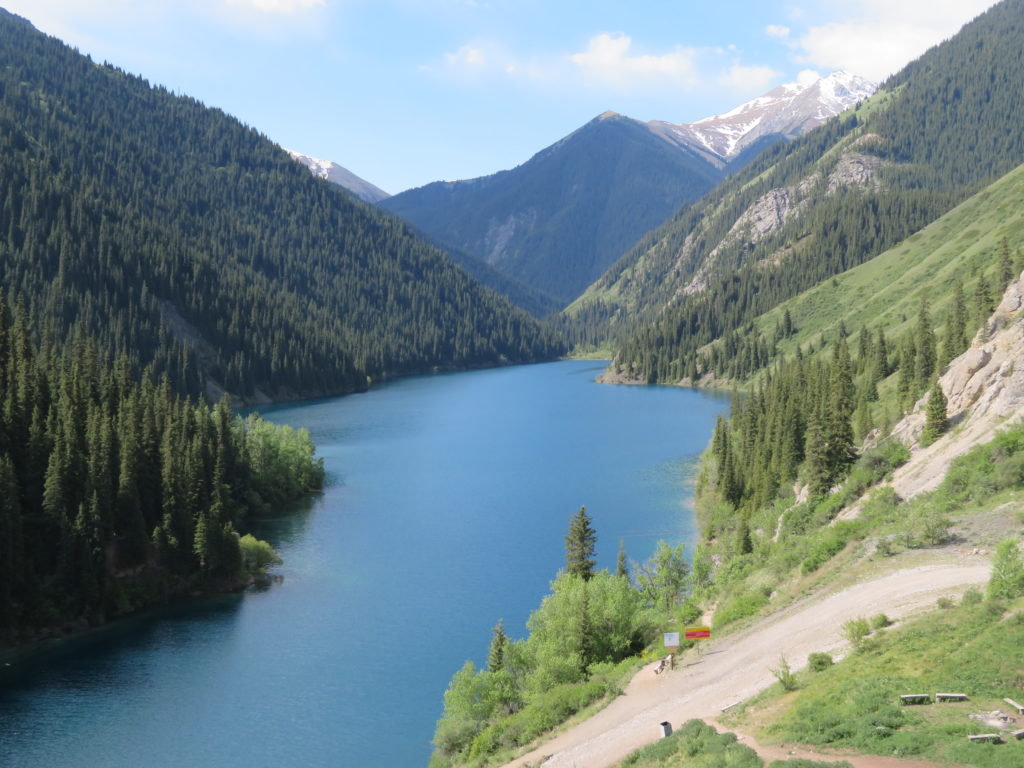
One of my favorite treks in Asia is the trek to the Kolsai lakes in Kazakhstan. The Kolsai Lakes trek reaches two beautiful alpine lakes surrounded by snow covered peaks, green meadows and dense pine forests. The lakes lie at the base of the Tien Shan mountains, which are not far from Almaty. Almaty is the former capital of Kazakhstan and a gateway to a number of hiking opportunities.
Only the first Kolsai lake is accessible by car, but from there it is a challenging hike up to the second lake. While it is only 8 km, you will have to make a steep ascent of almost 500 meters. It can easily take up to 4 or 5 hours to get there.
At first it is just a gradual climb as you walk just above the first lake. This is the most beautiful part of the hike for its lake views. As you enter the dense pine forests the difficult part starts, over tree trunks and boulders to the second lake. You can camp here or walk back to the first lake where there are number of accommodation options.
Despite the difficulty, you don’t need a guide as the path you need to follow is obvious and well-marked. However it is very important to come well prepared. Carry enough snacks and water because there are no options to buy food on the trail.
A lot of people visit the Kolsai lakes on a day trip from Almaty, but this means you will spend a lot of time in transit and will only get a glimpse of the first lake. If you want to do the full hike to the second lake you need at least three days, allowing one full day for the hike.
Keep an eye on Intrepid Road’s YouTube channel for an upcoming vlog about hiking Kolsai Lakes!
Best Treks in East Asia
China
When thinking of the best treks in Asia, don’t forget that China also borders the Himalayas. The tallest mountains in the world, even Mt. Everest can be climbed from Tibet! Eastern China also has incredible views (remember the landscapes for the movie Avatar?) and should not be overlooked when searching for your next trek in Asia.
Tiger Leaping Gorge
By: Finding Jing (follow along on Facebook)
- Distance: 22 km
- Duration: 1-3 days
- Difficulty: Medium
- Permits: Entrance Fee
- Guide: Not Required
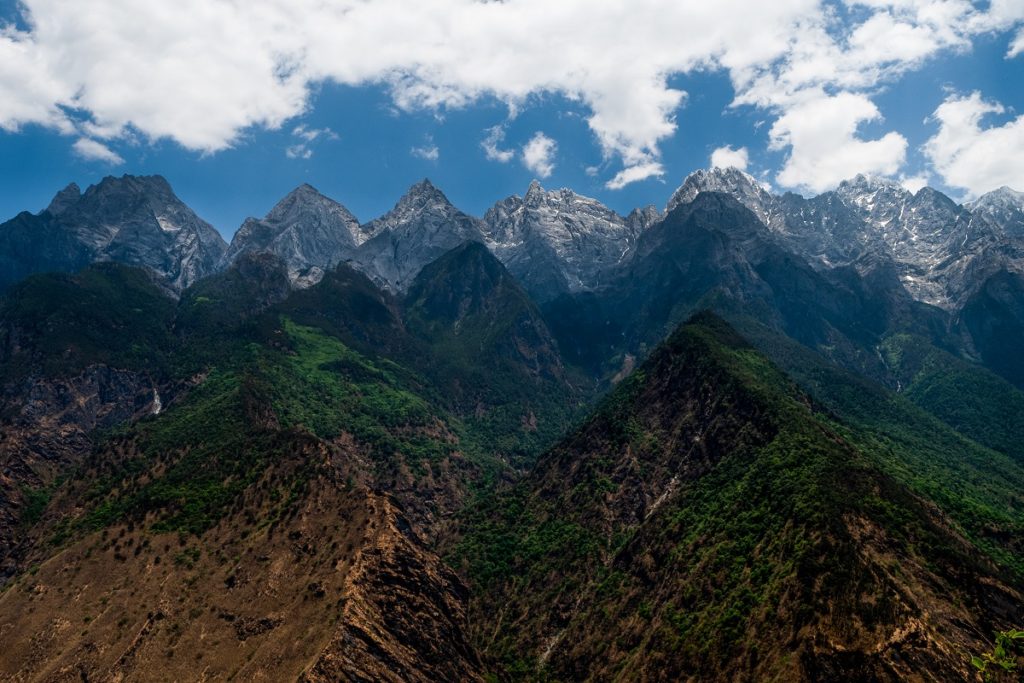
Tiger Leaping Gorge (TGL) is a picturesque ravine considered one of the deepest gorges in China. The gorge cuts between the Jade Dragon Snow Mountain and Haba Snow Mountain with Jinsha River or the upper section of the Yangtze River running between it. The Tiger Leaping Gorge trek is normally hiked in 1.5 to 2 days. However, it can be stretched to 3 days if you want to do it in a more leisurely pace or if you also want to check out the Upper Gorge.
The hiking trail, also known as the Upper Trail, is about 22 km long. Following this scenic route takes 8 to 10 hours, starting from Qiaotou and ending at Tina’s Guesthouse by the main road. From here, you can trek into the bottom of the Middle Gorge for a closer view of the raging Yangtze River. It’s worth the extra mile.
There is a ticket office in Qiaotou, near the start of the Upper Trail, where you need to pay an entrance fee of RMB 45 ($6 USD). A guide is not required because the trek is pretty straightforward and well-marked with posts and arrows. There are guesthouses every 2 or 3 hours to the trek where you can buy food, have a toilet break, or stay for the night.
Approximate budget for a 2-day trek without a guide is around RMB 300 ($40 USD). This budget includes the entrance fee, food, one night accommodation and additional entry fees for the Middle Gorge route.
Mount Gongga Trek
By: Flyerism
- Distance: 57 km
- Duration: 7 days
- Difficulty: Easy
- Permits: Required
- Guide: Not Required
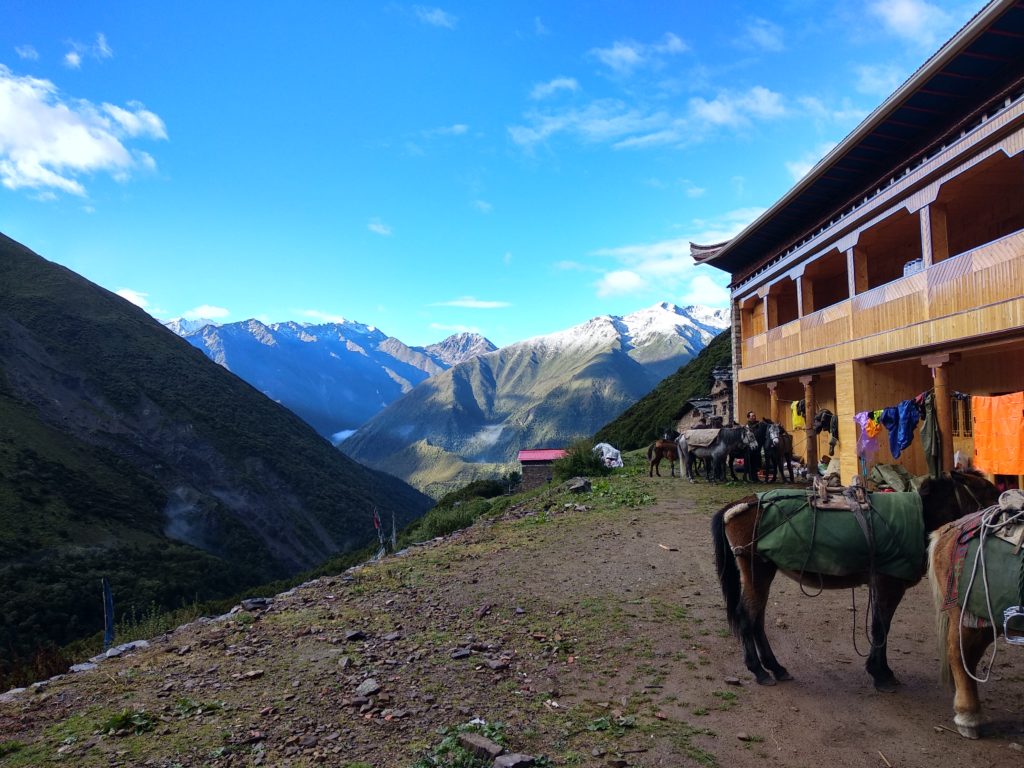
One of my favorite treks as a trekking enthusiast is the 7-day Gongga Trek (Kangding – Konka Monastery – Shangmuju village). The trail is at the base of Gongga Mountain (7556 m), which the locals call Minya Konka, “The King of the Sichuan Mountains”.
The trek is a week of splendid scenery with snow-capped mountains, glaciers, hot springs, valleys, meadows, and Tibetan monasteries. The walk is a pleasant one without difficult terrain and is rated as being beginner-friendly. The accommodation along the trek is basic, mostly in cabins without shower facilities. Everyday, our guides would prepare a simple Chinese breakfast (congee porridge and dumplings) and dinner (rice, stir-fried veggies and meat).
One day it was snowing even through it was only September, so it’s best to prepare for all types of weather. Although the snow made the hike much more challenging, we were later rewarded with magnificent views when we reached 4900m in altitude.
The Gongga mountain trail is very popular with the Chinese hiking community. The best period to hike will be from April to November, though you should avoid going on a Chinese public holiday. A permit is required, and it’s possible to do the hike on self-guided basis. A package trekking tour from a local company is typically priced at $1100 USD per person for group of 3-5 hikers.
Japan
Japanese have cherished mountains and respected them as deities for centuries. There are countless mountains around the country that are covered in shrines, and are summitted each year as pilgrimages. Overnight stays at the summit in temple accommodation are part of the tradition. Although Japanese mountains may not have as much elevation as other countries, the cultural importance of them guarantees a wonderful trekking experience.
Mt. Fuji Summit
By: Erika’s Travelventures (follow along on Facebook)
- Distance: 6 km
- Duration: 1 day
- Difficulty: Medium
- Permits: Not Required
- Guide: Not Required
Read about how you can Hike Mt. Fuji Independently!
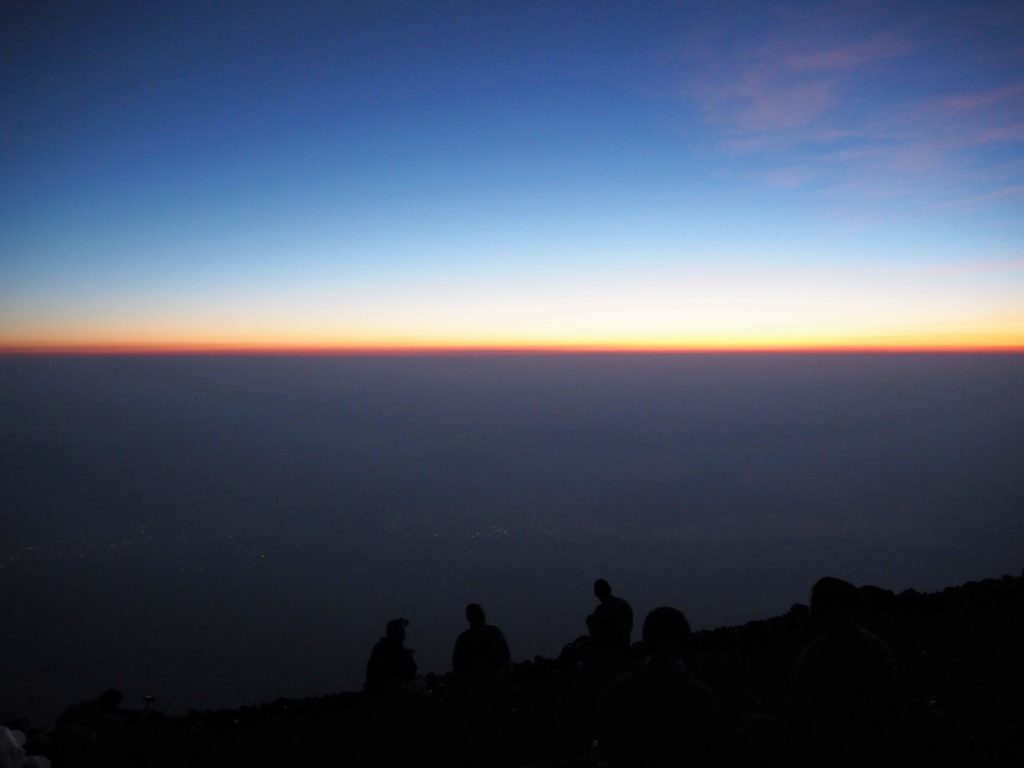
“A wise man climbs Fuji once. A fool climbs it twice.”
Mt. Fuji is the tallest mountain in Japan at 3,776m. It has been worshiped by locals as a holy mountain for centuries, and many pilgrims come every summer to summit Mt. Fuji. What used to be a several-day hike from the lakes at the base of Mt. Fuji has recently become a popular overnight hike or one-day “bullet climb.” Because of its accessibility by bus and train from Tokyo, summiting Mt. Fuji is a popular hike in Japan. No permits or a guide are necessary, although it’s common for large tour groups to summit Mt. Fuji via the Yoshida Trail.
“Bullet hikers” will take a night-bus from Shinjuku, Tokyo to arrive at the Yoshida Trailhead, at the Mt. Fuji 5th station around 10pm. It generally takes 3-6 hours in the dark to reach the summit, over steep, rocky terrain. There are many mountain lodges along the trail where trekkers can rest, buy noodles or snacks and water, and go to the bathroom for a small fee. Be sure to pack a headlamp, and very warm clothes even in the middle of summer, because the summit is FREEZING.
When trekkers reach Mt. Fuji’s summit, not only are they treated to an incredible sunrise, but they have also been blessed by the soul of the mountain. The trail down is a gradual one, separate from the trail up. It takes about 2-3 hours to descend back to the 5th station to return to Tokyo. Trekkers who spend a night on Mt. Fuji will usually hike to the 8th station, and sleep for a few hours at a mountain hut, before waking up around 2-3am to start the hike to the summit.
South Korea
Mountain climbing in South Korea has become a very popular pastime for the locals. South Korea is covered in mountains, and many of them can be climbed as a day-trip from a nearby city. Do as the locals do and put on your visor and grab your trekking poles!
Namhansanseong Trek
By: Once in a Lifetime Journey (follow along on Facebook)
- Distance: up to 3 hours
- Duration: 4-8 km
- Difficulty: Easy
- Permits: Not Required
- Guide: Not Required
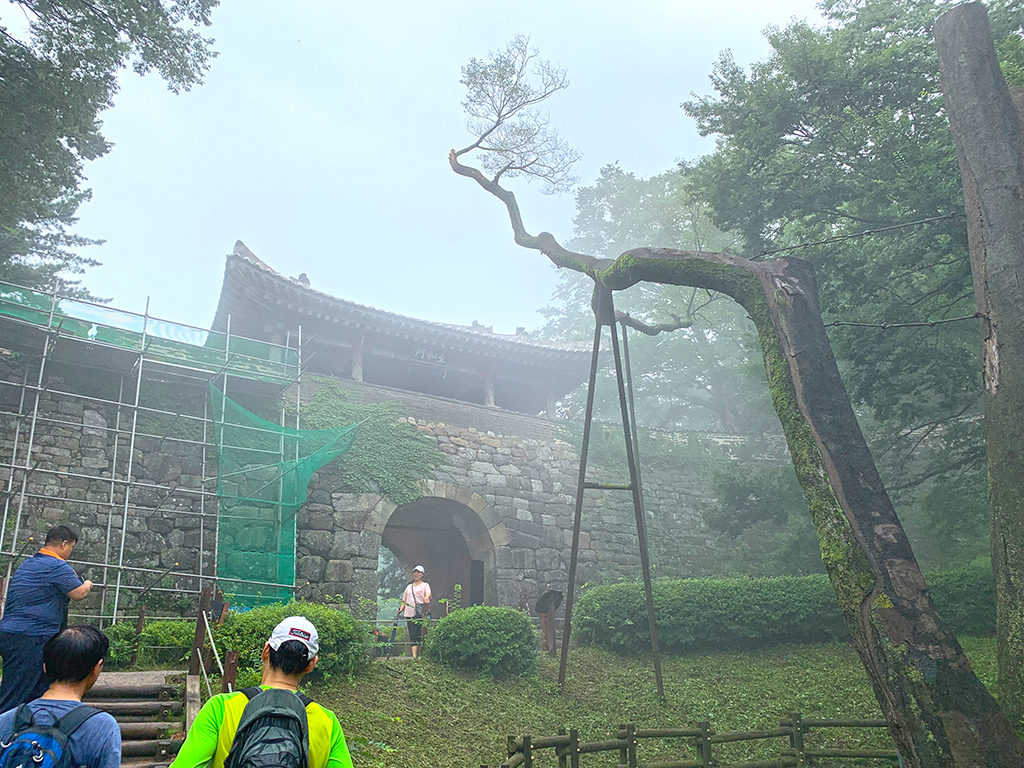
My father-in-law is an avid hiker, who has shown me some of the best treks in his home country, South Korea. My favorite trek has to be Namhansanseong, which is just outside Seoul in Gyeonggi Province. Five different trails range from 4km to around 8km, with the latter only taking about 3 hours. There are plenty of reasons why this is one of the best treks in Asia.
The hike is conveniently located near Seoul, and the base of the mountain is well-connected to Seoul by public transportation. Trekking near Seoul makes your life easy, as there are demarcated paths that are built up with wooden steps or rope mats. There are also spectacular views of Seoul throughout the hike.
The history of the region is another reason why I love this trek. Namhansanseong is a UNESCO World Heritage Site, where you can walk along the old fortress wall that was once protected by Buddhist soldier-monks. The gates are a beautiful ode to Korea’s architectural and militaristic past. There is also a small village in the center with restaurants serving traditional Korean cuisine like freshly made tofu and acorn jelly. It’s the perfect post-hike treat.
The nature is also incredible, with pine trees as far as the eye can see. The changing colors of autumn leaves is a dramatic sight, and I’ve even seen a few mountain rabbits!
While Namhansanseong Provincial Park isn’t the heaviest trek, it is a wonderful journey into the Korean capital’s culture, history and nature.
Best Treks in Southeast Asia
Indonesia
Trade snow-capped mountains for dense jungle or volcanic rock when trekking in Indonesia. Indonesia is famous for its many volcanoes that spread all over the archipelago, especially Java island. Some are still very active, and most of them are climbable. Prefer trekking in Asia on flat ground? Head over to the jungles of Sumatra, and hope you’ll catch of glimpse of elusive, endangered animals.
Mount Bromo and Mount Ijen
By: Trains Planes and Tuk Tuks (follow along on Instagram)
- Distance: 10 + 3 km
- Duration: 2 days
- Difficulty: Medium
- Permits: Not Required
- Guide: Not Required
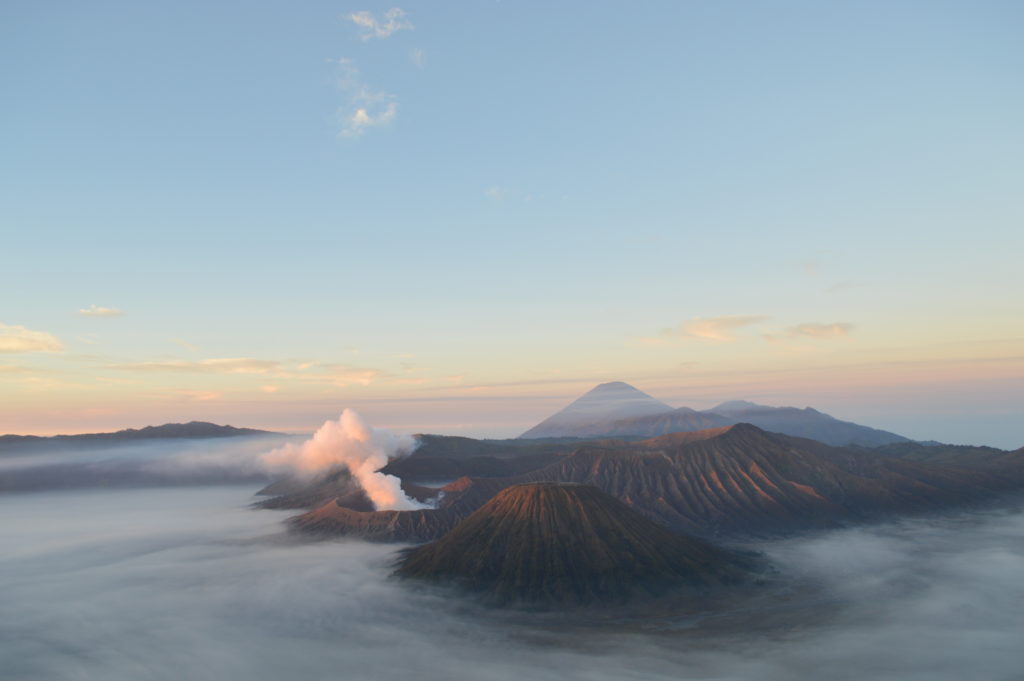
If you like volcanoes, bizarre landscapes, and epic sunrises, the best trek in Asia for you is the two-day climb up Bromo and Ijen in Java, Indonesia. To get there, take a minibus from Probolinggo to Cemoro Lewang at the base of Mount Bromo. Take your pick of about a dozen basic homestays and have dinner at Cafe Lava before turning in early.
The hike goes up to the main sunrise viewpoint, King Kong Hill, 10 km uphill from town. You don’t need a guide or permits, but you should bring a headlamp. Leave at 2am to reach the top in time to watch the colorful sunrise behind a trio of volcanoes. Then, hike back the way you came. To reach Mount Ijen next, home of the mystical sulfuric “blue flames”, hop in a minivan to Probolinggo, then a train to Banyuwangi.
While you can hike Ijen on your own, it’s far easier and costs about the same to book a tour through a guesthouse like Kampung Osing Inn. It’s only 3 km to the crater, but it’s steep and takes about two hours. You’ll share the trail with sulfur miners hauling impossibly heavy loads on their shoulders.
Once you reach the top, the treacherous part begins: an extremely steep, slippery rock scramble into the crater, in the dark, with toxic sulfur fumes blowing in your face. This is why the guide is helpful, and make sure you have a gas mask! Watch the sun come up at the crater lake before heading back to Banyuwangi.
Trekking Mount Bromo and Ijen are some of the most beautiful treks in Asia. Budget $80-$100 USD for the three-day trip starting in Yogyakarta and ending in Bali. Tours can also be booked round-trip from Bali.
Bukit Lawang Orangutan Trek
By: Chalkie and the Chippy (follow along on Instagram)
- Distance: 10+ km
- Duration: 1-7 days
- Difficulty: Easy
- Permits: Required
- Guide: Required
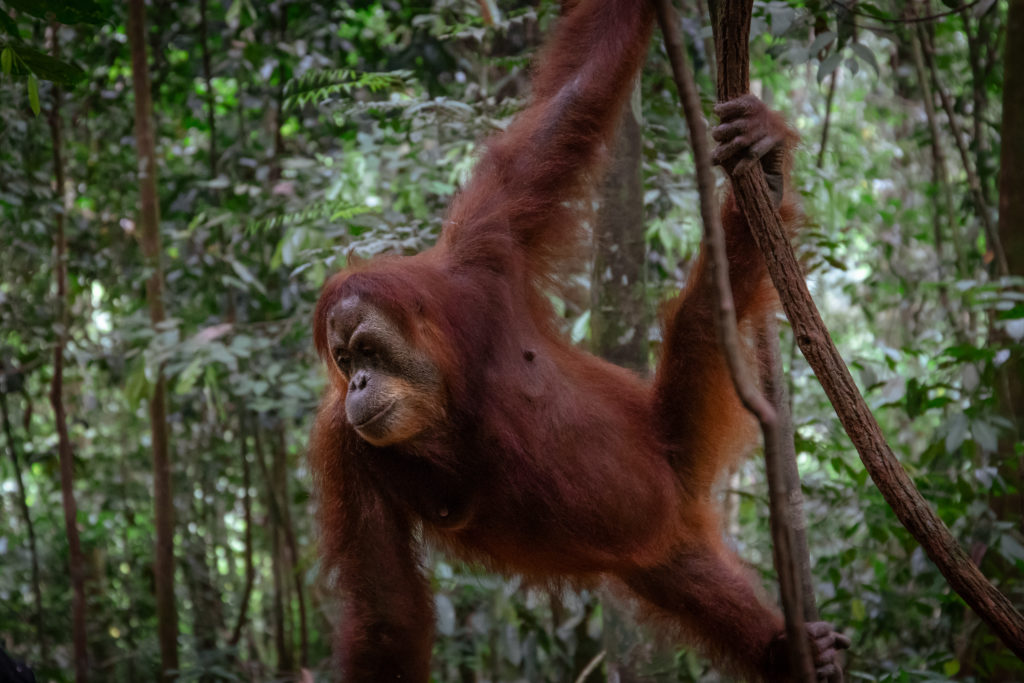
Seeing animals in the wild is a truly rewarding experience, especially after hours of trekking into the North Sumatran jungle. The orangutan treks in North Sumatra leave from the town of Bukit Lawang, and participants will need a licensed guide who will obtain a trekking permit to enter the Gunung Leuser National Park across the river.
Treks can be half a day to one week long, depending on budget, and what participants are wanting to get out of the experience. All tours guarantee seeing an abundance of wildlife, from wild and semi-wild orangutans, gibbons, Thomas Leaf monkeys and macaques. A 2-day, 1-night trek covering 10 km is the most popular tour option, costing about $100 USD per person. All meals, snacks and water are supplied, and dinner and breakfast is prepared by a cook at the campsite. The campsite is located along a creek bed, with makeshift huts for shelter with a thin mattress and sleeping bag.
The trails involve a combination of up and down hill trekking, but you’ll take many rest breaks along the way for wildlife spotting. Aside from spotting endangered species, highlights of the trek include swimming under waterfalls and the option to go tubing back to Bukit Lawang town.
A one-week trek going deeper into the jungle is an opportunity to see Sumatran elephants, rhinos and tigers if you are lucky. After a few days the food supply will run dry, so participants will need forage for their own food and water. In addition, there is no designated walking trails so the guides and participants will need to track and map their way around.
Whether you want to just spot wildlife in the jungle, or be more adventurous on a week-long trek, there is an orangutan trek for everyone in North Sumatra.
Mount Rinjani
By: Lolapan Travels (follow along on Instagram)
- Distance: 27.5 km
- Duration: 3 days
- Difficulty: Medium
- Permits: Required
- Guide: Not Required
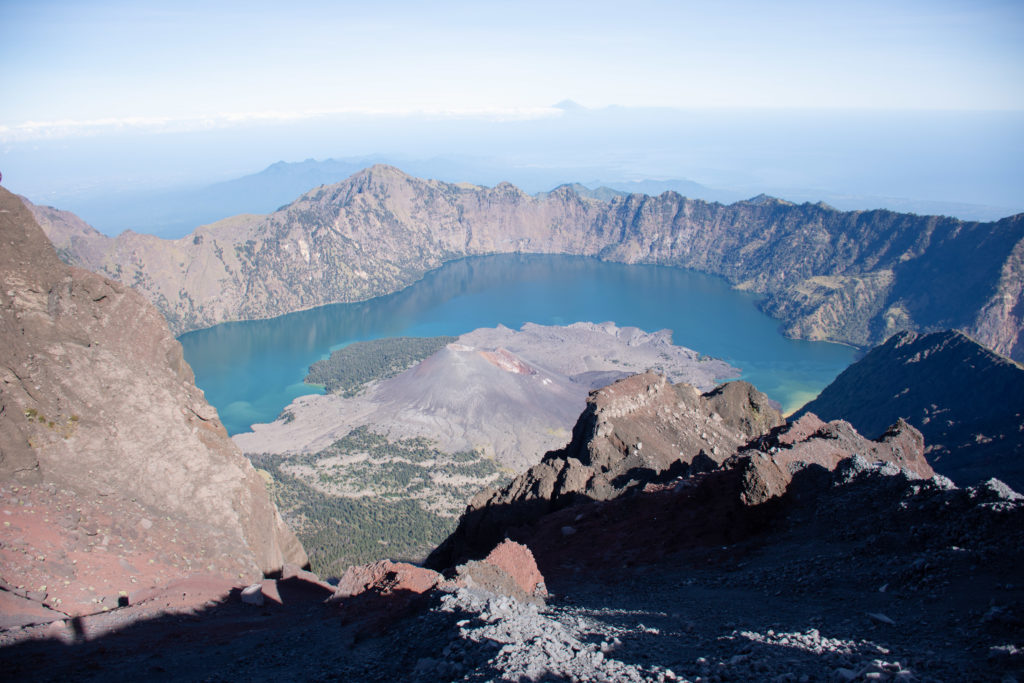
Mount Rinjani in Lombok, Indonesia is an intense 3-day, 2-night trek to the top of an active volcano. In total, the trek is 27.5 km and takes you to the crater rim at 3,726 m above sea level. On your way to the top you’re sure to witness some incredible views of the surrounding islands.
Myanmar
Myanmar is an off-the-beaten path country home to hill tribes in the center and mountains in the north. Various trekking routes take you through traditional villages barely touched by Western influences. Humble homestay experiences and authentic village life, like local children running up to greet trekkers, makes Myanmar home to some of the best treks in Asia.
Kalaw to Inle Lake
By: Erika’s Travelventures (follow along on Instagram)
- Distance: 44+ km
- Duration: 3 days
- Difficulty: Easy
- Permits: Not Required
- Guide: Not Required
Read about trekking Kalaw to Inle Lake UNGUIDED!
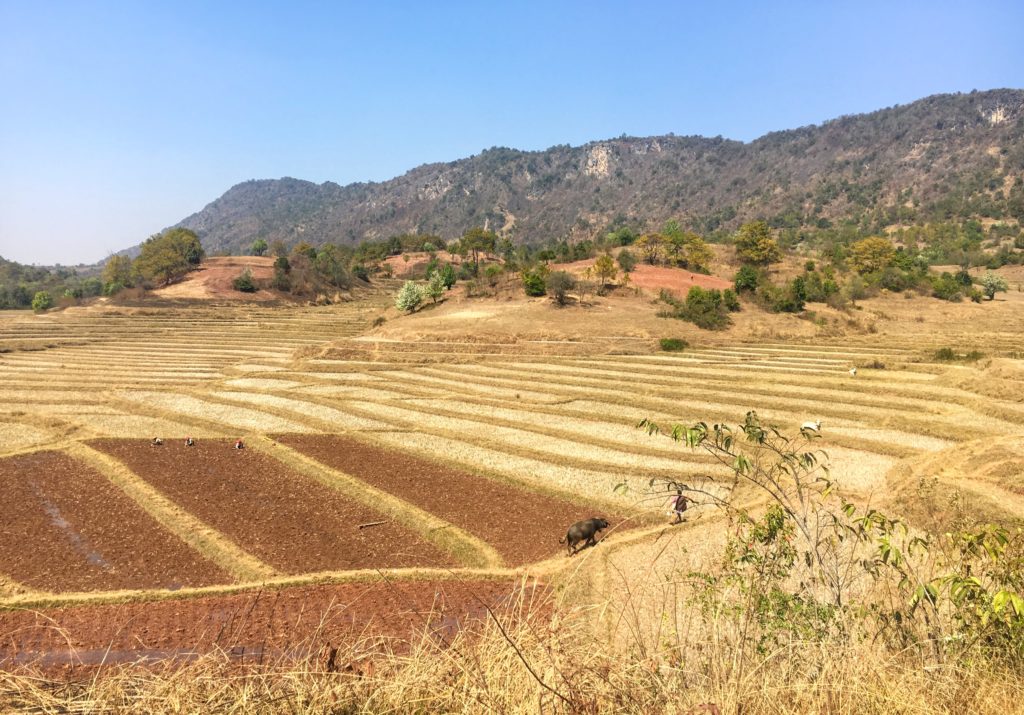
Inle Lake is a common destination for visitors to Myanmar, but getting there on foot from Kalaw is a special trekking experience. Kalaw is a small mountain town reachable by minibus from Mandalay, where all trekkers spend a night before embarking on the trek. I loved staying at homey Country Inn, where a massive breakfast was included – perfect fuel for the long day ahead.
Each day you walk through agricultural fields and small villages, and you’ll pass by locals as they are working in the fields or tending to their water buffalo. In February, the weather was hot and dry, which was ok for trekking. The most common time to trek is November, when the rain has turned all the fields a bright, healthy green.
Trekkers stay in village homestays, where a local family opens their home up to trekkers, and cooks food for them also. While it’s possible to trek from Kalaw to Inle Lake without a guide, the biggest perk of going with a tour is to not have to search for the few homestays available.
On the last day of the hike, you’ll reach the edge of Inle Lake. There is a small town here where you can negotiate the cost of a boat ride to Nyaungshwe, the largest city near Inle. The highlights of this trek include interacting with the friendly locals and spending time in the rural villages of Myanmar.
Vietnam
Vietnam is home to everything a backpacker could dream of: cheap hostels, winding roads to motorbike, friendly locals, authentic culture, and delicious street food. It’s only natural that one of the best treks in Asia is located in Vietnam. Walk through rice paddies, enjoy scenic vistas, and experience rural village life!
Sapa
By: Swedish Nomad (follow along on Instagram)
- Distance: 9+ km
- Duration: 1-5 days
- Difficulty: Easy
- Permits: Not Required
- Guide: Not Required
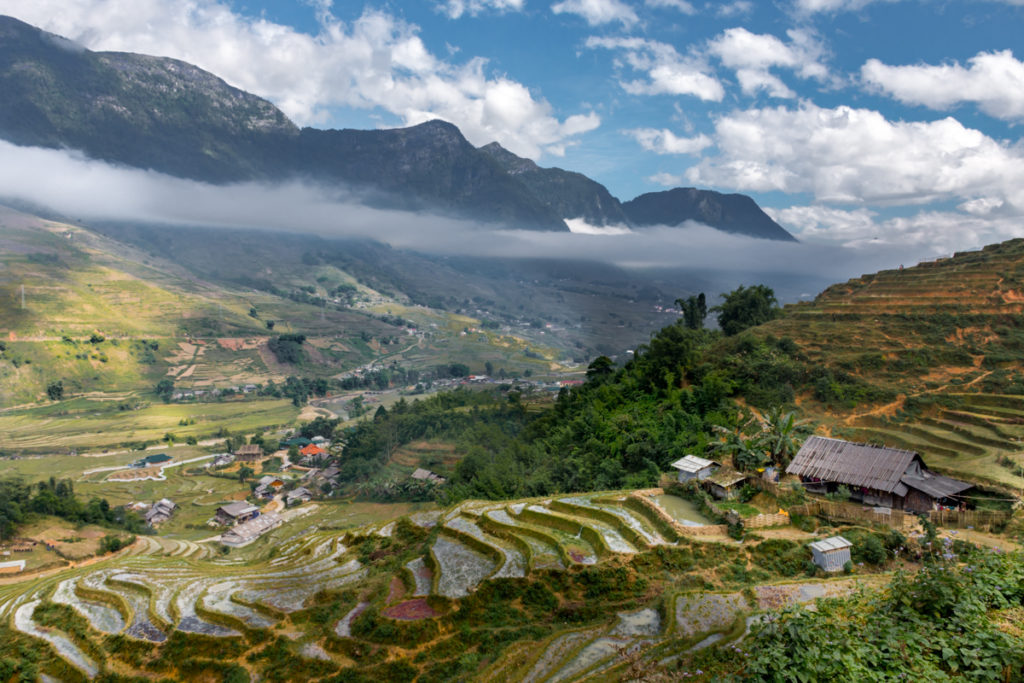
The Sapa Valley has emerged as one of the most popular trekking destinations in Vietnam, and for a good reason. It’s easy to access by train from Hanoi, it offers beautiful scenery, and the valley is home to indigenous tribes who still live by their old traditions and culture. The best season for scenic views is in August-September, but every season has its charm in Sapa.
The main town of Sapa is situated at 1500 m, where most treks start from. The treks themselves last 1-5 days, and are not that difficult. Every person with reasonable health will be able to experience trekking here. The most common route takes two days to finish and includes a homestay experience with a local family where you’ll be eating traditional food, spend time with your guide, and just enjoy the scenery. A 3-day trek is around 30 km, and is divided into various lengths depending on your itinerary.
The trek costs somewhere between $25-$50 USD per night which includes a local guide, food and accommodation. It’s cheaper to book directly via a guide rather than booking via tour companies in Hanoi. It’s possible to trek alone in Sapa, but I recommend getting a guide as the experience will be much better, and there are some stretches where it could potentially be dangerous to walk on your own, if not careful enough.
Cambodia
Cambodia is home to thousands of acres of virtually untouched jungles. This means ample opportunity for trekking in nature, and experiencing this harsh and unforgiving environment. Be sure to stay on the trails when trekking, because it is well known that Cambodia is still littered in land mines from its dark and turbulent history.
Ratanakiri District
By: Rest and Recuperation (follow along on Facebook)
- Distance: Varies
- Duration: 3+ days
- Difficulty: Easy
- Permits: Required
- Guide: Required
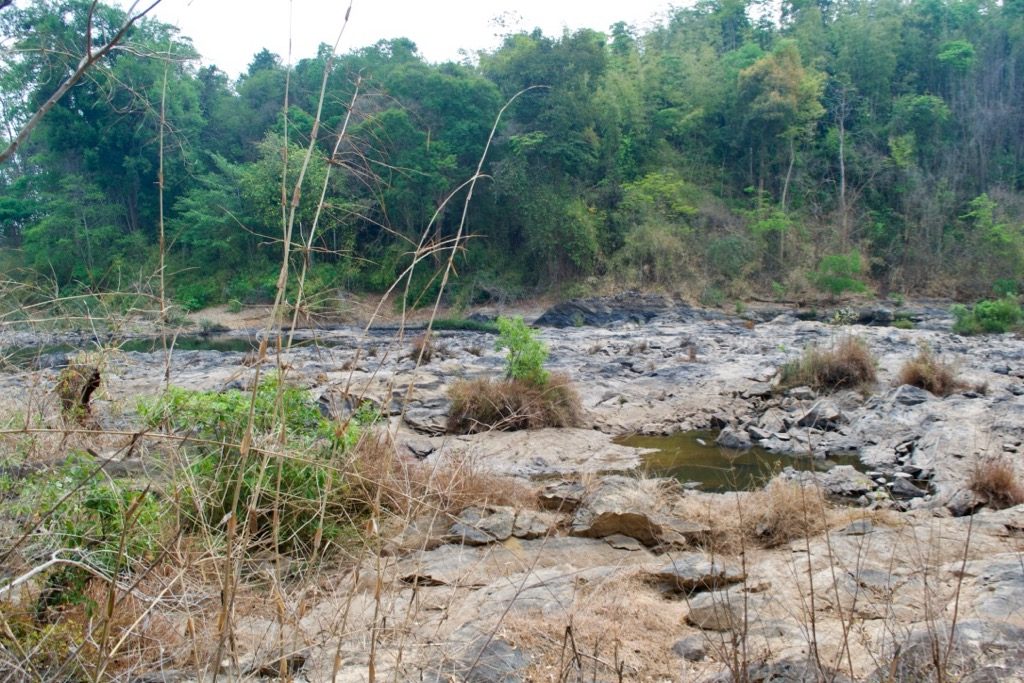
If you looking for an off-the-beaten-path location in Cambodia and you’ve already been to Angkor Wat, Phnom Penh, and Kep, visit the Ratanakiri District and Virachey National Park. They lie in the north-east of the country and borders Laos and Vietnam. During the Vietnam War it was bombed heavily by the U.S. Army and it is still one of the poorest regions of Cambodia. Nowadays, Ratanakiri is one of the regions where you can immerse yourself in authentic Cambodian culture.
Trekkers need to join a tour to enter the National Park, for legal and security reasons. I suggest going with Parrot Tours, as they did a great job organizing our trip. We decided to do a three-day excursion in the jungle, sleeping in hammocks with a mosquito net on top.
The price is approximately $50 USD per person, depending on the length of the trek and the number of people. You will be accompanied by a local guide that speaks some English and by a local ranger who speaks only Khmer. They will answer any questions you have, and also carry most of the food so your backpack only contains a change of clothes, your hammock, and water.
You’ll feel very connected to nature on this trek when you cross (and wash in) rivers, and eat bamboo soup cooked in a bamboo branch cut from a tree. Trekkers get the chance to see many animals, and even go for night-time excursions if you are brave enough. Virachey National Park is home to panthers, but do not worry, they will try to be as far away as possible from you!
Found Your Next Trek in Asia? Pin This!




